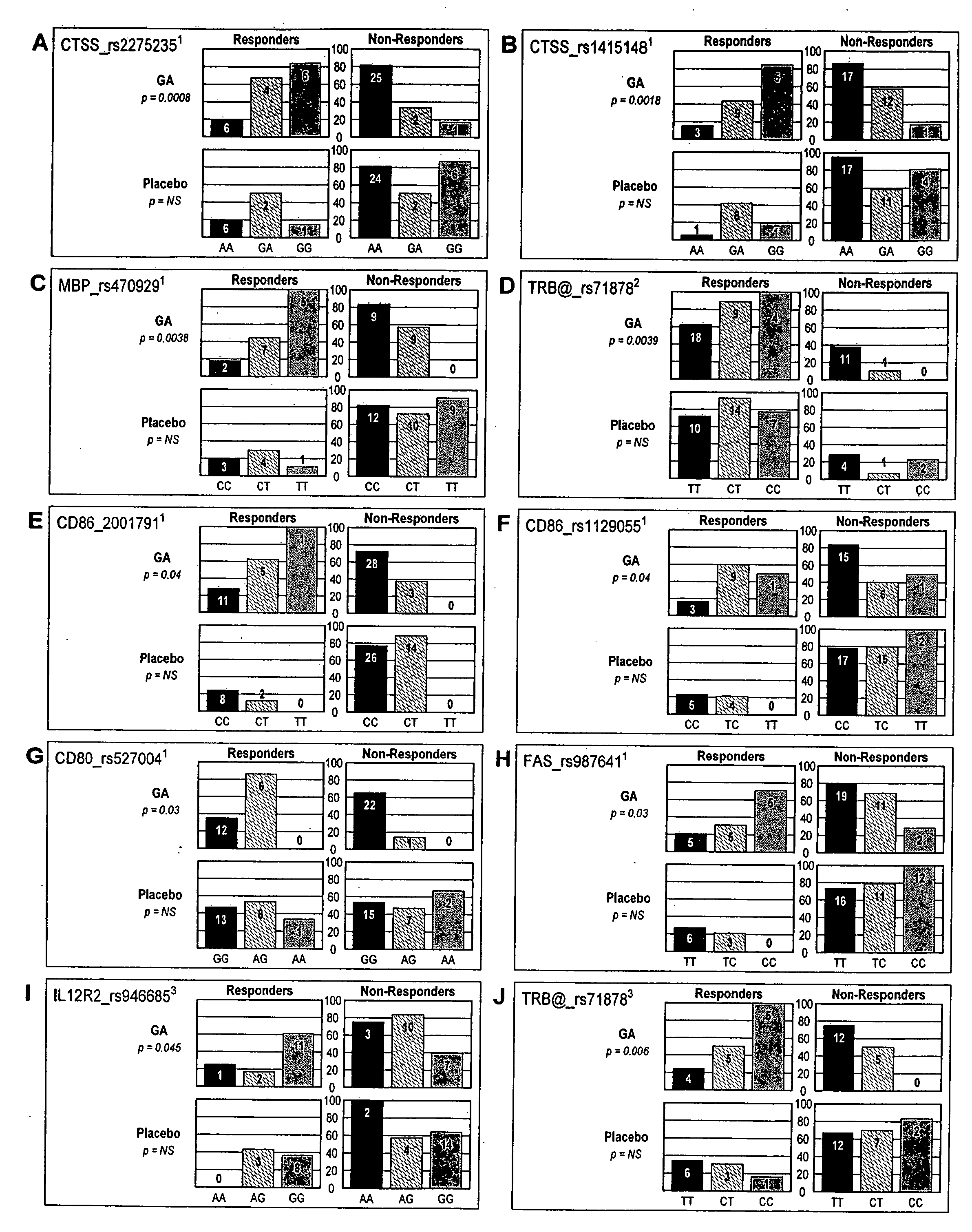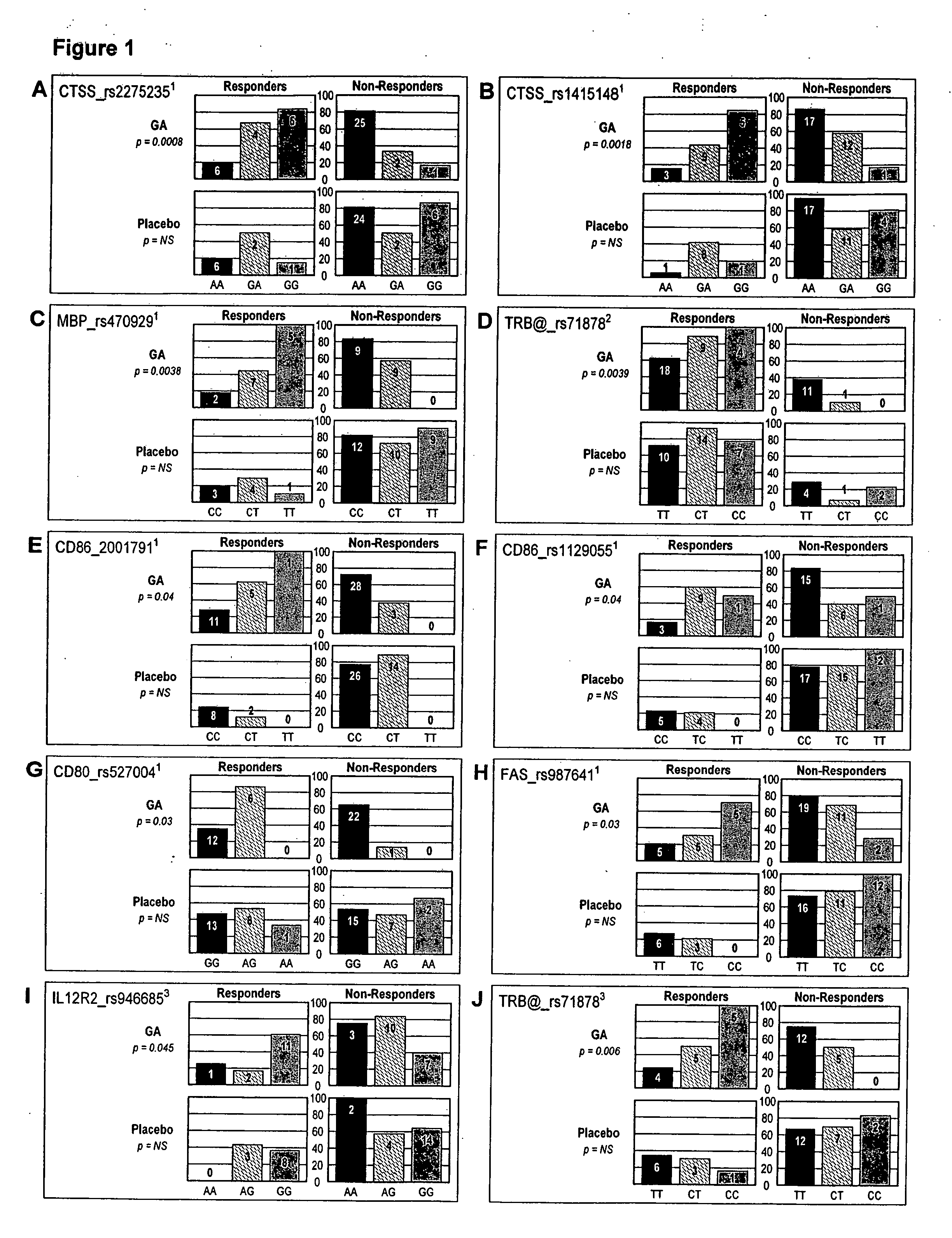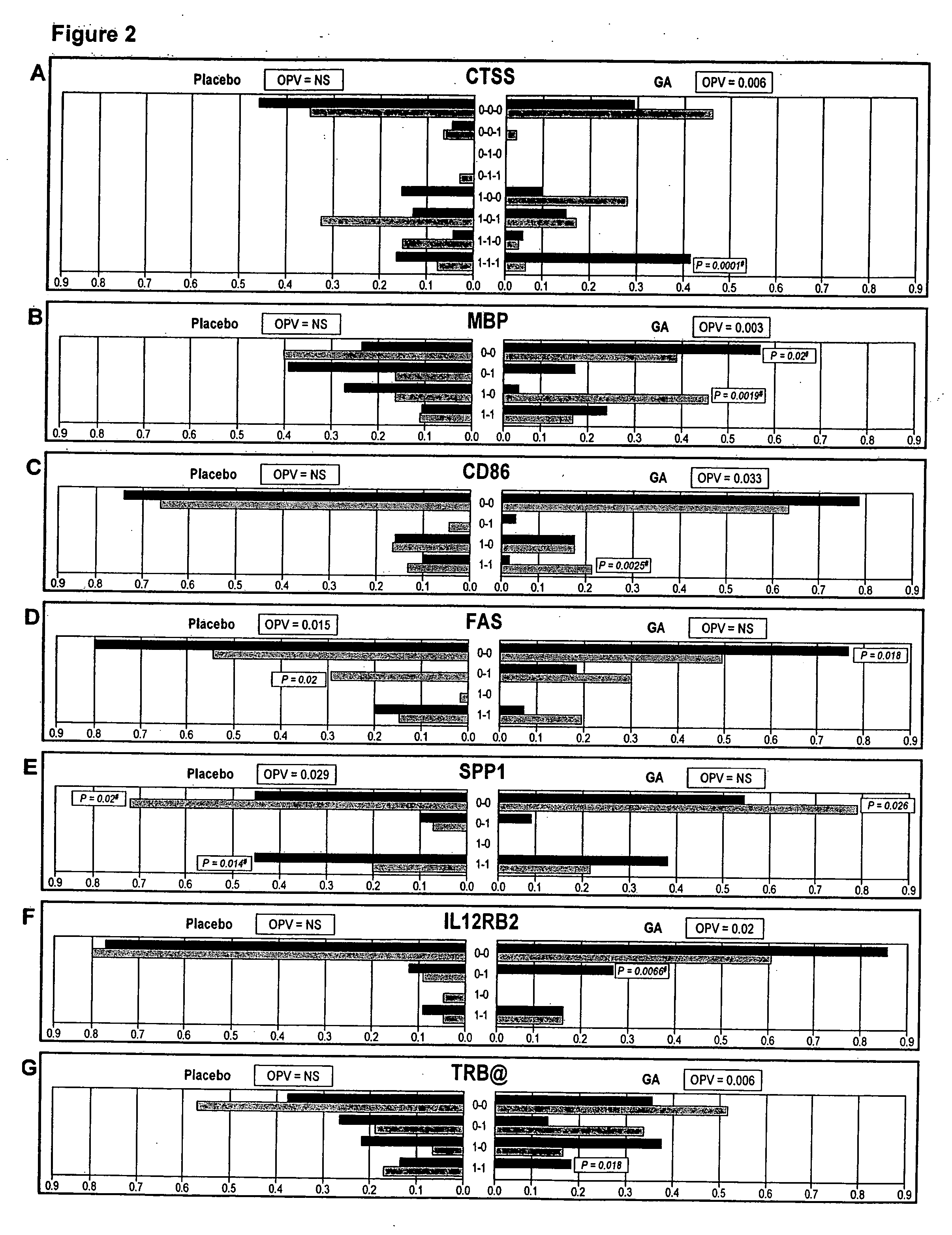Markers associated with the therapeutic efficacy of glatiramer acetate
a technology of glatiramer acetate and therapeutic efficacy, applied in the direction of microbiological testing/measurement, material analysis, biochemistry apparatus and processes, etc., can solve the problems of inability to accurately predict the efficacy and safety of the available drugs, inhibit the various pathological effector functions, and lack of objective tools. , to achieve the effect of accurate prediction
- Summary
- Abstract
- Description
- Claims
- Application Information
AI Technical Summary
Benefits of technology
Problems solved by technology
Method used
Image
Examples
example i
Gene and Patient Selection
[0130] Subjects were selected from two previously completed randomized, double blind, placebo-controlled, multi-centric clinical trials. In both clinical trials, patients were required to have a diagnosis of definite MS (Poser C M, et al. New diagnostic criteria for multiple sclerosis: guidelines for research protocols. Ann Neurol., (1983);13(3):227-31) and a relapsing-remitting course (Lublin F D, Reingold S C. Defining the clinical course of multiple sclerosis: results of an international survey. National Multiple Sclerosis Society (USA) Advisory Committee on Clinical Trials of New Agents in Multiple Sclerosis. Neurology, (1996);46(4):907-11) 85 (33.9%) out of 251 patients from the U.S. pivotal trial (Johnson K P, et al. Copolymer 1 reduces relapse rate and improves disability in relapsing-remitting multiple sclerosis: results of a phase 111 multicenter, double-blind placebo-controlled trial. The Copolymer 1 Multiple Sclerosis Study Group. Neurology, (19...
example ii
DNA Isolation and SNP Genotyping
[0133] DNA was isolated from 174 patients and genotyped for 63 SNPs according to previously described methods (Grossman I, et al. Genomic profiling of inter-population diversity guides prioritization of candidate-genes for autoimmunity. Genes Immun. (2004)). Briefly, DNA was extracted from leukocytes using the Roche mammalian blood DNA isolation kit according to manufacturer's instructions. Quantification and normalization of the DNA samples were done using this system in a 96 well format using DNA OD at 260 nm and 280 nm. The DNA was normalized to 50 ng / ul in costar 96-well plates. The DNA was then re-arranged in 96-well plates according to the original electronic list provided by Covance in an electronic grid, which was then computationally imported to the Sequenom MassARRAY system.
[0134] The Sequenom MassARRAY system at the Weizmann Genome Center facility provides a genotyping platform based on primer extension coupled with mass spectrometric det...
example iii
Analysis of SNP Genotyping
[0136] The procedure used stringent definitions for response to GA therapy. In the European / Canadian MRI trial: A (“combined”)-responders were defined as having no relapses throughout a 9 month follow-up and no more than one new T1-enhancing lesion in the third trimester; non-responders were defined as having at least one relapse throughout the 9 months follow-up or more than one new TI-enhancing lesion, or both; B (to be titled “TI lesion-free” hereafter)-responders were defined as exhibiting no new T1-enhancing lesions in the third trimester, while non-responders were defined as exhibiting at least one new T1-enhancing lesion in that period. For validation purposes response was also treated as a continuous variable where number of new T1-enhancing lesions within the third trimester was analyzed as the independent variable.
[0137] In the US. pivotal clinical trial responders were defined as having no evidence of disability progression and were relapse-free...
PUM
| Property | Measurement | Unit |
|---|---|---|
| Volume | aaaaa | aaaaa |
| Fraction | aaaaa | aaaaa |
| Fraction | aaaaa | aaaaa |
Abstract
Description
Claims
Application Information
 Login to View More
Login to View More - R&D
- Intellectual Property
- Life Sciences
- Materials
- Tech Scout
- Unparalleled Data Quality
- Higher Quality Content
- 60% Fewer Hallucinations
Browse by: Latest US Patents, China's latest patents, Technical Efficacy Thesaurus, Application Domain, Technology Topic, Popular Technical Reports.
© 2025 PatSnap. All rights reserved.Legal|Privacy policy|Modern Slavery Act Transparency Statement|Sitemap|About US| Contact US: help@patsnap.com



